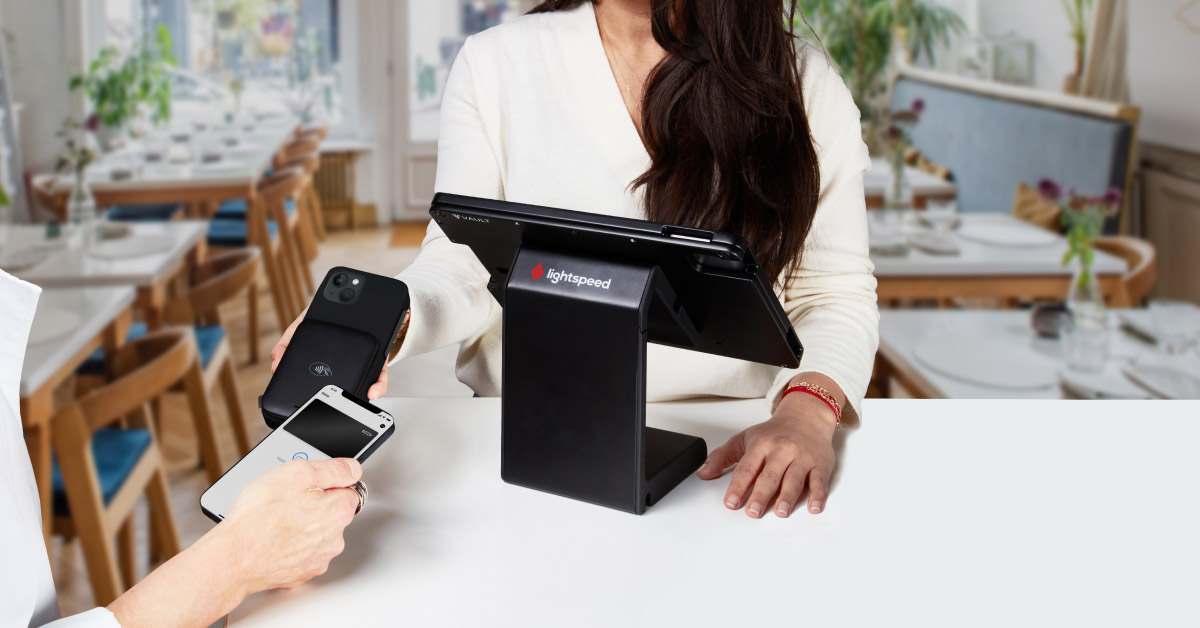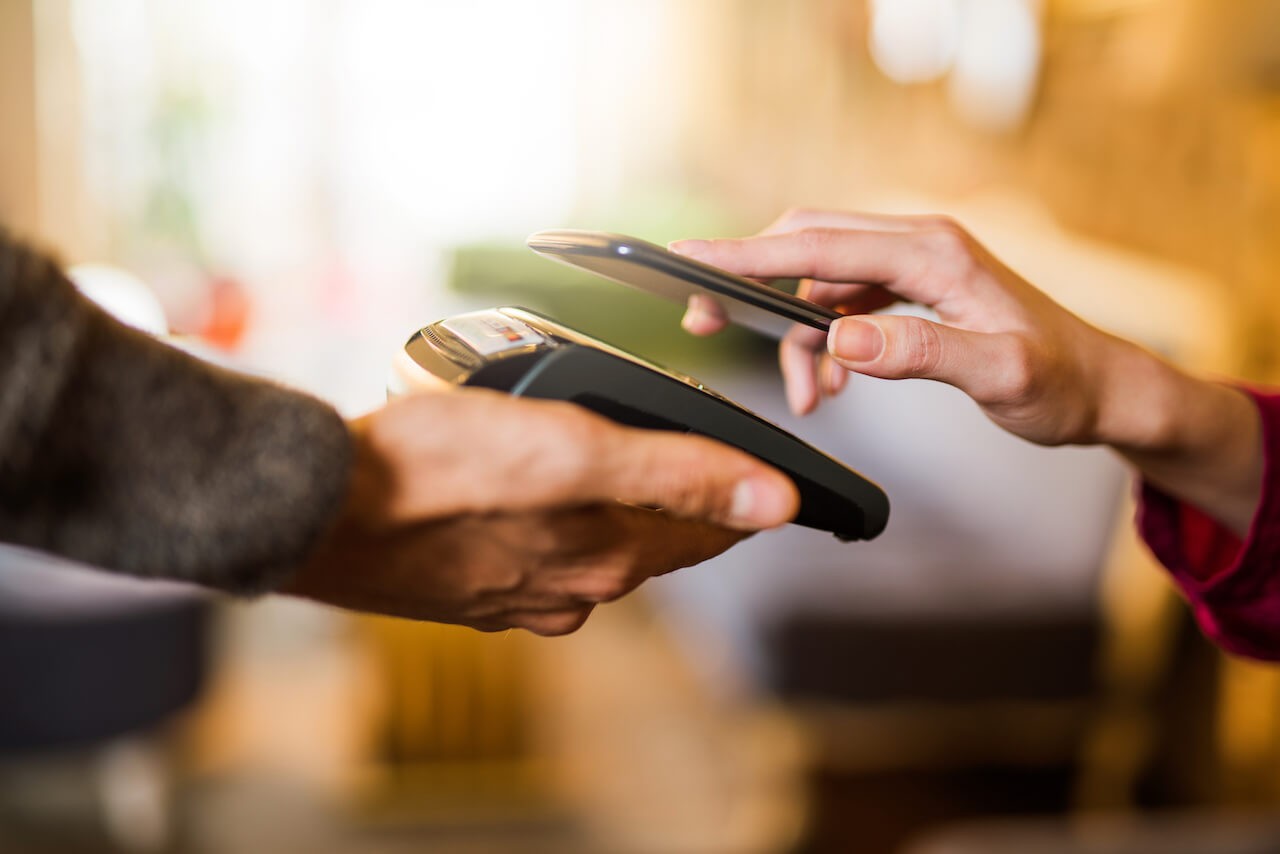
Near field communication, commonly called NFC, is a form of payment technology that allows people to pay using a device such as a mobile phone or smartwatch through a digital wallet.
According to a recent report released by the Australian Banking Association, digital wallet payments have surged by 35% in the last year.
The report also shows that in the last twelve months, Australian customers made $126 billion in payments with their mobile wallets, overtaking total ATM cash withdrawals ($105 billion) for the first time ever.
In addition, research by GlobalData shows that digital wallet transactions in Australia are projected to grow by 42% in 2024 due to an accelerated consumer shift towards non-cash payment methods.
With cash in decline and digital wallets on the rise, hospitality venues must stay ahead of the curve and ensure they can always accept the latest payment technology.
With this in mind, we take a closer look at NFC and digital payments to understand how they work, their benefits and how to implement NFC payments in your venue.
- What Is NFC?
- How does NFC technology work?
- Are NFC payments secure?
- Benefits of NFC payments
- NFC vs. traditional payment methods
- How to implement NFC payments in your venue
What is NFC?
Essentially, near field communication, or NFC, is the technology that enables customers to make contactless, ‘tap and go’ payments with their smart devices.
NFC technology allows two devices, like your phone and a payment terminal, to talk to each other to process a payment. Apple Pay, Google Pay and Samsung Pay are notable examples of NFC mobile payment wallets.
Three components of NFC
- NFC tags: Small, passive devices that store data and can be read by an NFC-enabled device. They don’t have their own power source and are powered by the electromagnetic field generated by an NFC reader. An example of an NFC tag would be a contactless credit card.
- NFC readers: Active devices that generate an electromagnetic field to communicate with NFC tags or other NFC-enabled devices, such as an EFTPOS machine.
- NFC-enabled devices: Smartphones, tablets, smartwatches, and other gadgets equipped with NFC chips can exchange data with NFC tags and with each other. An example of an NFC-enabled device would be an iPhone or an Apple Watch.
How does NFC technology work?
NFC is a set of communication protocols that enable two electronic devices to communicate when they are within a few centimetres of each other.
NFC is similar to radio-frequency identification technology, commonly referred to as RFID, which allows us to identify things through radio waves.
NFC has a range of about 4 centimetres, making it ideal for secure and quick exchanges of data over short distances. Unlike RFID, which typically involves a one-way transfer of data, NFC allows for two-way communication between devices.
Here’s a breakdown of how NFC works:
- Initiation: One device (usually the NFC reader) generates an electromagnetic field to establish a connection.
- Data exchange: Once the connection is established, data can be transferred between the two devices. The type of data exchanged can vary widely—from text and images to payment information.
- Termination: After the data transfer is complete, the connection is terminated, and the devices go back to their standby states.
The evolution of NFC technology
NFC technology is not a new concept.
As we just touched on, NFC is powered by RFID technology, which has been around for decades for things like scanning luggage tags at airports and items in retail stores.
NFC was first introduced commercially in the early 2000s and used a specific RFID frequency for close-range communications. One of the initial uses of NFC, and still one of the most common, is to gain access to secure places like office buildings, gyms, and hotel rooms using security cards or keyfobs. NFC is also used on public transport, such as Opal cards in Sydney and Myki cards in Melbourne.
Today, however, NFC is increasingly used to power contactless payments, particularly on people’s smartphones.

Are NFC payments secure?
NFC payments via a smartphone are highly secure, particularly compared to most traditional payment methods, thanks to short-range communication, encryption, and additional security measures.
When you make an NFC payment, the data exchange occurs over a very short distance, which makes it difficult for potential cyber-fraudsters to intercept the communication. Furthermore, the data transmitted between the NFC-enabled device and the payment terminal is encrypted, ensuring that sensitive information, such as credit card details, remains protected during the transaction.
In addition to these security features, many NFC-enabled devices incorporate advanced authentication methods like biometrics (fingerprint or facial recognition) or a PIN code.
This multi-layered security approach significantly reduces the risk of unauthorised transactions.
For instance, digital wallets like Apple Pay and Google Pay use tokenisation, replacing actual card details with a unique digital identifier or token for each transaction. This means that even if a hacker manages to intercept the token, it is useless without the original encryption key.
In a nutshell, NFC payments offer a robust and secure alternative to traditional payment methods, combining convenience with cutting-edge security technologies.
Benefits of NFC payments for businesses
NFC payments offer several benefits, making them an appealing option for customers and hospitality businesses.
Benefits for consumers
1. Convenience
NFC payments are typically completed in under a second, making them faster than traditional payment methods like cash or chip-and-PIN cards. Users can simply tap their NFC-enabled device on the payment terminal to complete a transaction without the need to carry physical wallets or cards.
2. Security
As we touched on earlier, NFC payments are very secure. Data transmitted during an NFC payment is encrypted, protecting sensitive information. Many NFC payment systems also require additional authentication, such as biometrics, adding an extra layer of security.
Benefits for businesses
1. Efficiency
The speed of NFC transactions reduces wait times at checkout, improving customer satisfaction and allowing venues to serve more customers in less time. Plus, reducing the need to handle cash or cards simplifies the payment process for both staff and customers.
2. Enhanced security
The encryption and tokenisation in NFC payments help reduce the risk of fraud and chargebacks, protecting both businesses and customers.
3. Customer experience
Offering NFC payments positions a business as modern and tech-savvy, appealing to customers who prefer using the latest payment technologies. NFC technology can also integrate with loyalty programs, making it easier for customers to earn and redeem rewards.
4. Data and analytics
Digital transactions provide valuable data that hospitality operators can use to analyse customer behaviour, optimise inventory, and personalise marketing efforts.

NFC vs. traditional payment methods
As we just mentioned, NFC payments are fast, secure, and convenient for customers. But how do they compare to traditional payment methods, such as cash, chip-and-PIN, and contactless credit cards?
Cash
While cash is usually universally accepted, more businesses are going cashless in favour of card and digital payments. Cash transactions can be great for businesses as there are no transaction or merchant fees to pay, but carrying large amounts of cash can be problematic–from increasing your risk of theft to taking time out of your day to cash into the bank.
Contactless cards
Contactless cards, which also leverage NFC technology, are widely accepted but offer lower security and are susceptible to fraud compared to digital wallets. When customers pay with a contactless credit or debit card, there is a maximum spending threshold, usually $100 in Australia, to prevent fraud and theft. If a contactless transaction is over the threshold, customers will be prompted to input their PIN for added security.
Chip-and-PIN
Chip-and-PIN cards provide high security with encryption and dynamic authentication, making them less vulnerable to fraud than contactless cards. They are widely accepted and secure but require inserting the card and entering a PIN, which adds a step to the process.
How to implement NFC payments in your restaurant
According to a recent report, approximately half of Australian businesses plan to invest in digital payments in the near future.
The report revealed that Victorian businesses are at the forefront of digital wallet adoption, with 38% accepting these types of payments. New South Wales and Queensland were close behind, with 34% of businesses accepting digital wallets.
With consumer adoption of digital payment methods like Apple Pay on the rise, especially among younger generations, an increasing number of hospitality venues are looking to implement NFC payment capabilities.
Here’s a step-by-step guide to help you get started.
1. Assess your needs and equipment
Firstly, you’ll need to evaluate your current POS and payments setup to determine if it supports NFC payments. Most modern POS systems have built-in NFC capabilities, but older models may require an upgrade.
2. Choose a payment processor
If you determine that your current system can’t accept NFC payments, the next step is to research payment providers.
Look for payment processors that support NFC payments. Lightspeed Payments, for example, makes it easy to accept all payment methods, including credit card, debit card, contactless and mobile payments.
Don’t forget to review transaction fees, monthly fees, and any other costs associated with different payment processors before making your final decision.
3. Install NFC-enabled terminals and integrate with POS system
Next, you’ll need to purchase NFC-enabled payment terminals. These terminals should be compatible with your POS system and support contactless payments. You might also need to update your POS software to ensure it can handle NFC transactions. This may involve working with your POS provider to install the necessary updates or software.
Lightspeed has payment processing capabilities embedded within the POS system, so there’s no need to integrate two different systems or platforms—everything is already interconnected.
4. Ensure security
It’s crucial to implement security protocols to protect customer data. Ensure that your NFC payment system complies with PCI DSS (Payment Card Industry Data Security Standard) requirements. You should also keep your POS software and payment terminals updated to protect against vulnerabilities.
5. Train staff
Train your staff on how to use the new NFC payment terminals. Ensure they understand the process and can assist customers with any questions or issues. Also allow staff to practice transactions to become familiar with the new system.
6. Promote NFC payments
The final step is to inform your customers that you now accept NFC payments. Use signage at your restaurant, update your website, and promote the new payment option on social media.
Remember to monitor transactions regularly to ensure that everything is running smoothly and to look for any issues or irregularities.
Future of NFC payment technology
With the rapid shift towards digital wallets and contactless payments, NFC technology provides a fast, secure, and convenient payment solution that enhances customer satisfaction and operational efficiency.
Implementing NFC payments in your restaurant positions your business as modern and forward-thinking and ensures you can meet the growing demand for seamless digital transactions.
Stay ahead of the curve with Lightspeed Payments and enjoy the advantages of a cutting-edge payment system that accepts NFC payments and keeps your customers coming back.

News you care about. Tips you can use.
Everything your business needs to grow, delivered straight to your inbox.


